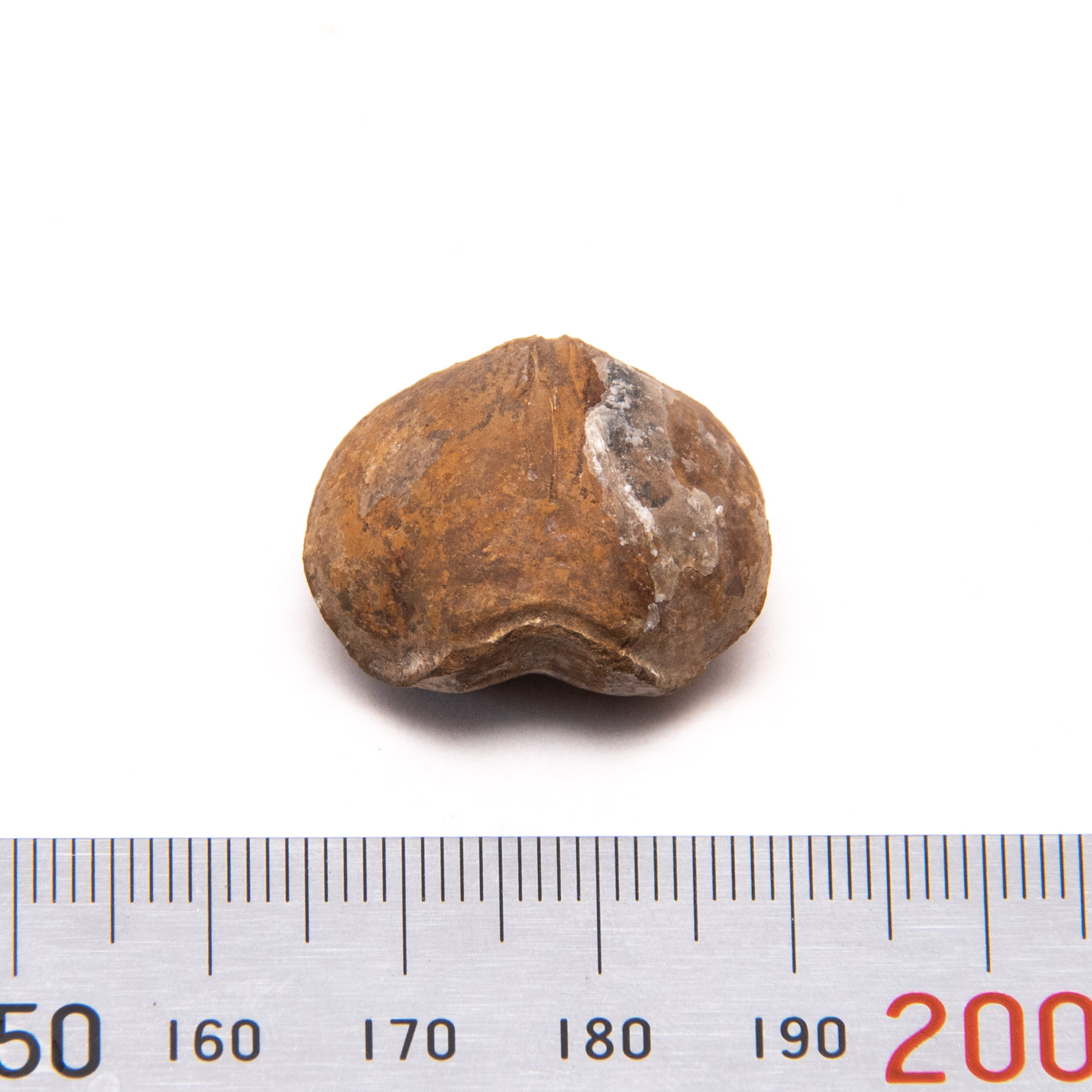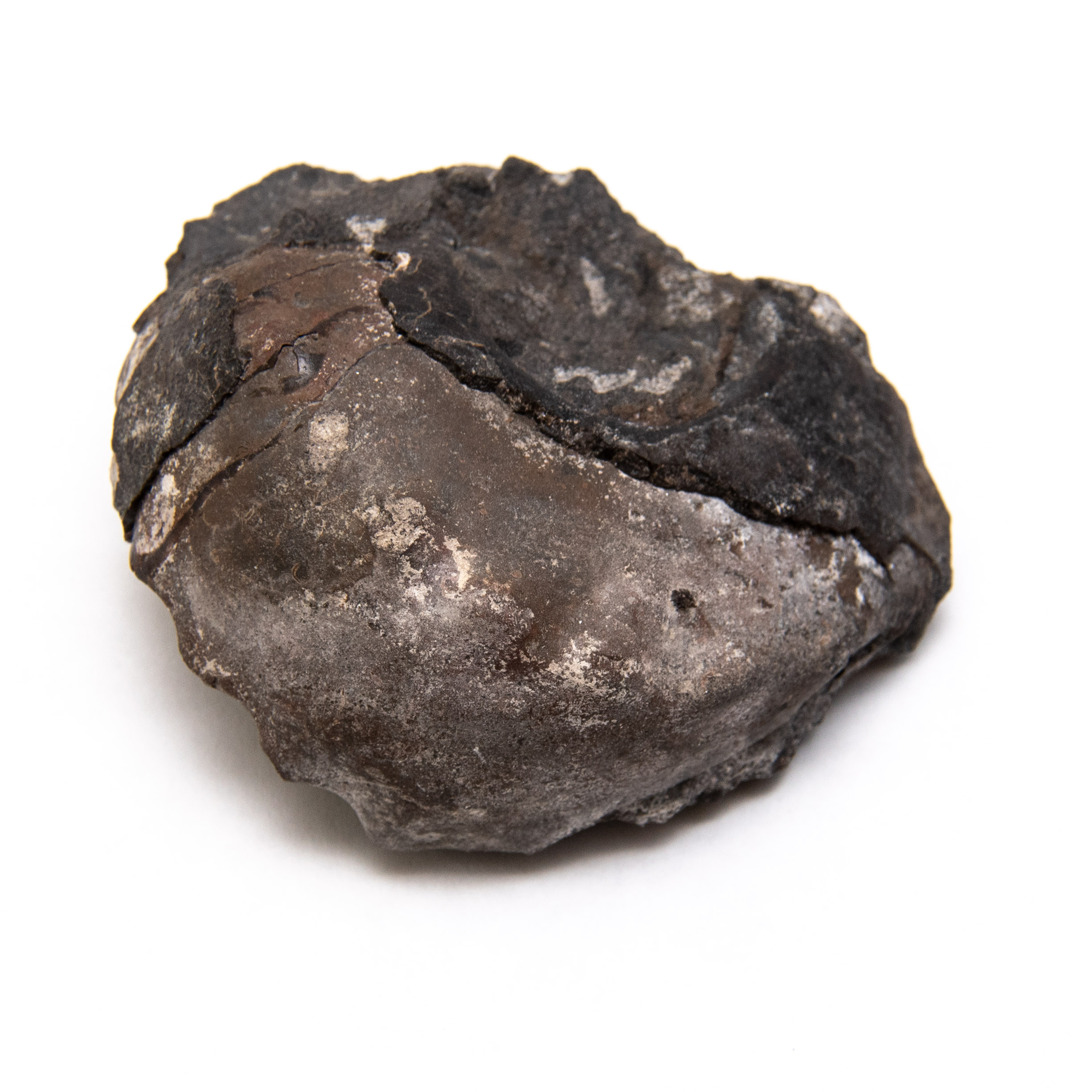I find all sorts of fossils that are in a situation that I can’t describe, then someone tells me the word for it. Steinkern is one of those. A Steinkern is a fossil consisting of mud or sediment formed by entering the hollow part of a natural object. A bivalve shell can become one easily. The Composita post details an example showing a steinkern. Below is a photo of a steinkern from a Brachiopod, Composita.

The fossil above formed when sediment entered the hollow shell of the deceased Composita. I often thought that perhaps air pockets could persist after hundreds of millions of years, but that isn’t the case. Rock itself is often permeable. Water will carry all sorts of minerals into these hollow spaces over time.
Cephalopods preserved as Steinkerns
Many of the cephalopods I find are preserved only as a steinkern. The fossilized shell portions stick securely to the limestone matrix, and the shell and the inner steinkern separate easier than the shell and the limestone. The septal walls remain embedded in the steinkern and make for interesting-looking fossils.
Steinkerns can also make identification difficult. For example, you often can’t see the nodes on the cephalopod Metacoceras from the steinkern alone. They are also misleading—the majority of the material that makes up a shell is less than the material it takes to form a steinkern.

Gastropods preserved as Steinkerns
Gastropods can lose a lot of identifying characteristics if found as a steinkern. Shell ornament and features are important for genus or species identification. Yet, you can often get a feel for the method of coiling, such as this Isostrophic coiled gastropod below, perhaps from the genus Bellerophon. With only a steinkern, you often can not determine the species.

More Information about Steinkerns
- Forum Post – myFossil.org
- Several Examples – Cretaceous Mantua


